Fast Performance Evaluation for Switched-Capacitor Converter Based on Convolutional Neural Networks
Abstract
:1. Introduction
2. Power Loss and Efficiency Analysis of Switched-Capacitor DC/DC Converters
- All switches share identical electrical characteristics, such as on-resistance , etc.
- All internal (energy transfer) capacitors handling the same voltage share an identical capacitance C and equivalent series resistance .
- The dead time of the converter is neglected.
- The switches and all other conductive interconnects are ideal.
- The current flowing between the input and output are impulsive.
- The voltage of each capacitor and all sources are constant.
3. Mathematical Model of SCC Topologies
4. Efficiency Prediction Based on Convolutional Neural Network
4.1. Data Collection and Preprocess
4.2. Convolutional Neural Network Construction
5. Result and Analysis
6. Conclusions and Future Work
Author Contributions
Funding
Institutional Review Board Statement
Informed Consent Statement
Data Availability Statement
Conflicts of Interest
Abbreviations
| SCC | Switched-capacitor converter |
| CTV | Charge transfer vertor |
| KCL | Kirchhoff current law |
| CNN | Convolutional neural network |
References
- Ye, Z.; Lei, Y.; Pilawa-Podgurski, R.C.N. A 48-to-12 V Cascaded Resonant Switched-Capacitor Converter for Data Centers with 99% Peak Efficiency and 2500 W/in3 Power Density. In Proceedings of the 2019 IEEE Applied Power Electronics Conference and Exposition (APEC), Anaheim, CA, USA, 17–21 March 2019; pp. 13–18. [Google Scholar] [CrossRef]
- Seeman, M.D.; Sanders, S.R. Analysis and Optimization of Switched-Capacitor DC–DC Converters. IEEE Trans. Power Electron. 2008, 23, 841–851. [Google Scholar] [CrossRef]
- Seo, G.S.; Le, H.-P. S-Hybrid Step-Down DC–DC Converter—Analysis of Operation and Design Considerations. IEEE Trans. Ind. Electron. 2020, 67, 265–275. [Google Scholar] [CrossRef]
- Dickson, J. On-chip high-voltage generation in MNOS integrated circuits using an improved voltage multiplier technique. IEEE J. Solid-State Circuits 1976, 11, 374–378. [Google Scholar] [CrossRef]
- Seeman, M.D. A Design Methodology for Switched-Capacitor DC-DC Converters. Ph.D. Thesis, EECS Department, University of California, Berkeley, CA, USA, 2009. [Google Scholar]
- Hamo, E.; Evzelman, M.; Peretz, M.M. Modeling and Analysis of Resonant Switched-Capacitor Converters With Free-Wheeling ZCS. IEEE Trans. Power Electron. 2015, 30, 4952–4959. [Google Scholar] [CrossRef]
- Hussein, S.H.; Yaseen, M.T. Performance Evaluation of Low-Voltage CMOS Switched-Capacitor Circuit. In Proceedings of the 2021 8th International Conference on Electrical and Electronics Engineering (ICEEE), Antalya, Turkey, 9–11 April 2021; pp. 40–43. [Google Scholar] [CrossRef]
- Kushnerov, A.; Ben-Yaakov, S. Algebraic synthesis of Fibonacci Switched Capacitor Converters. In Proceedings of the 2011 IEEE International Conference on Microwaves, Communications, Antennas and Electronic Systems (COMCAS 2011), Tel Aviv, Israel, 7–9 November 2011; pp. 1–4. [Google Scholar] [CrossRef] [Green Version]
- Gupta, A.; Raizada, S. Step-down Fibonacci switched capacitor converters- a topological design method. In Proceedings of the 2020 IEEE 17th India Council International Conference (INDICON), New Delhi, India, 10–13 December 2020; pp. 1–6. [Google Scholar] [CrossRef]
- Mo, L.; Chen, G.; Huang, J. From Components to Converters: A Fundamental Topology Derivation Method for Single-Inductor Multi-Input Multi-Output Converters Based on Graph Theory. In Proceedings of the 2021 IEEE International Conference on Power Electronics, Computer Applications (ICPECA), Shenyang, China, 22–24 January 2021; pp. 458–463. [Google Scholar] [CrossRef]
- Peng, F.Z. A generalized multilevel inverter topology with self voltage balancing. IEEE Trans. Ind. Appl. 2001, 37, 611–618. [Google Scholar] [CrossRef]
- Gerlach, A.; Scheible, J.; Rosahl, T.; Eitrich, F.T. A generic topology selection method for analog circuits demonstrated on the OTA example. In Proceedings of the 2015 11th Conference on Ph.D. Research in Microelectronics and Electronics (PRIME), Glasgow, UK, 29 June–2 July 2015; pp. 77–80. [Google Scholar] [CrossRef]
- Ferro, E.; Brea, V.M.; Lopez, P.; Cabello, D. Dynamic Model of Switched-Capacitor DC–DC Converters in the Slow-Switching Limit Including Charge Reusing. IEEE Trans. Power Electron. 2017, 32, 5293–5311. [Google Scholar] [CrossRef]
- Panda, K.P.; Bana, P.R.; Panda, G. Reduced Switch Count Seven-level Self-Balanced Switched-Capacitor Boost Multilevel Inverter. In Proceedings of the 2020 IEEE International Conference on Power Electronics, Drives and Energy Systems (PEDES), Jaipur, India, 16–19 December 2020; pp. 1–6. [Google Scholar] [CrossRef]
- Barzegarkhoo, R.; Lee, S.S.; Khan, S.A.; Siwakoti, Y.P.; Lu, D.D.-C. A Novel Generalized Common-Ground Switched-Capacitor Multilevel Inverter Suitable for Transformerless Grid-Connected Applications. IEEE Trans. Power Electron. 2021, 36, 10293–10306. [Google Scholar] [CrossRef]
- Navidi, M.M.; Graham, D.W. A Regulated Charge Pump with Extremely Low Output Ripple. Electronics 2019, 8, 1293. [Google Scholar] [CrossRef] [Green Version]
- Hsu, C.P.; Lin, H. Analytical Models of Output Voltages and Power Efficiencies for Multistage Charge Pumps. IEEE Trans. Power Electron. 2010, 25, 1375–1385. [Google Scholar] [CrossRef]
- Makowski, M.; Maksimovic, D. Performance limits of switched-capacitor DC-DC converters. In Proceedings of the Proceedings of PESC’95—Power Electronics Specialist Conference, Atlanta, GA, USA, 18–22 June 1995; Volume 2, pp. 1215–1221. [Google Scholar] [CrossRef]
- Chung, H.; Ioinovici, A. Development of a generalized switched-capacitor DC/DC converter with bi-directional power flow. In Proceedings of the 2000 IEEE International Symposium on Circuits and Systems (ISCAS), Geneva, Switzerland, 28–31 May 2000; Volume 3, pp. 499–502. [Google Scholar] [CrossRef]
- Leordeanu, M.; Hebert, M. A spectral technique for correspondence problems using pairwise constraints. In Proceedings of the Tenth IEEE International Conference on Computer Vision (ICCV’05), Beijing, China, 17–21 October 2005; Volume 2, pp. 1482–1489. [Google Scholar] [CrossRef] [Green Version]
- Li, D.; Shang, D.; Xia, F.; Yakovlev, A. Modelling Switched-Capacitor DC-DC Converters with Signal Transition Graphs. In Proceedings of the 2018 15th International Conference on Synthesis, Modeling, Analysis and Simulation Methods and Applications to Circuit Design (SMACD), Prague, Czech Republic, 2–5 July 2018; pp. 1–100. [Google Scholar] [CrossRef]

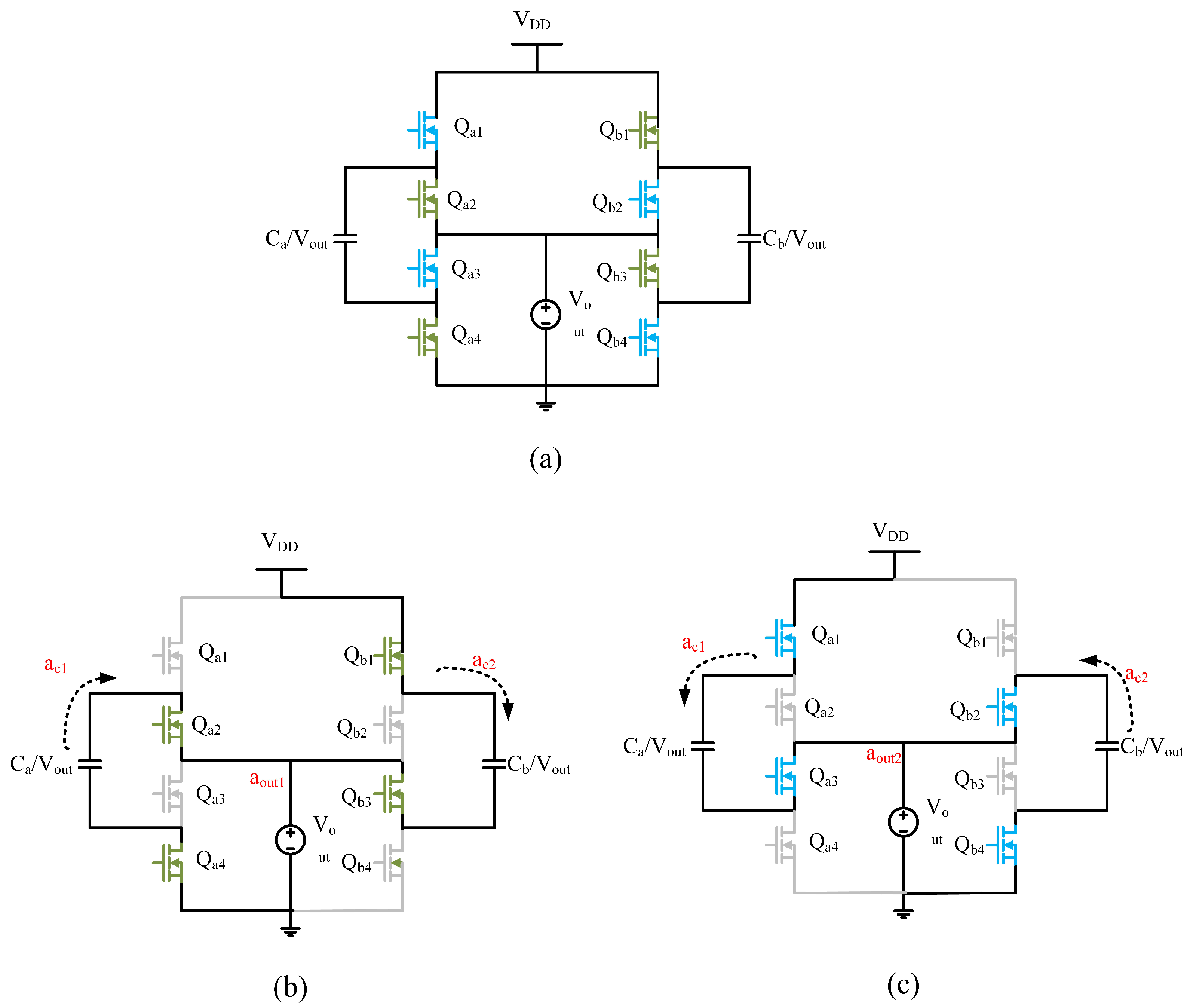
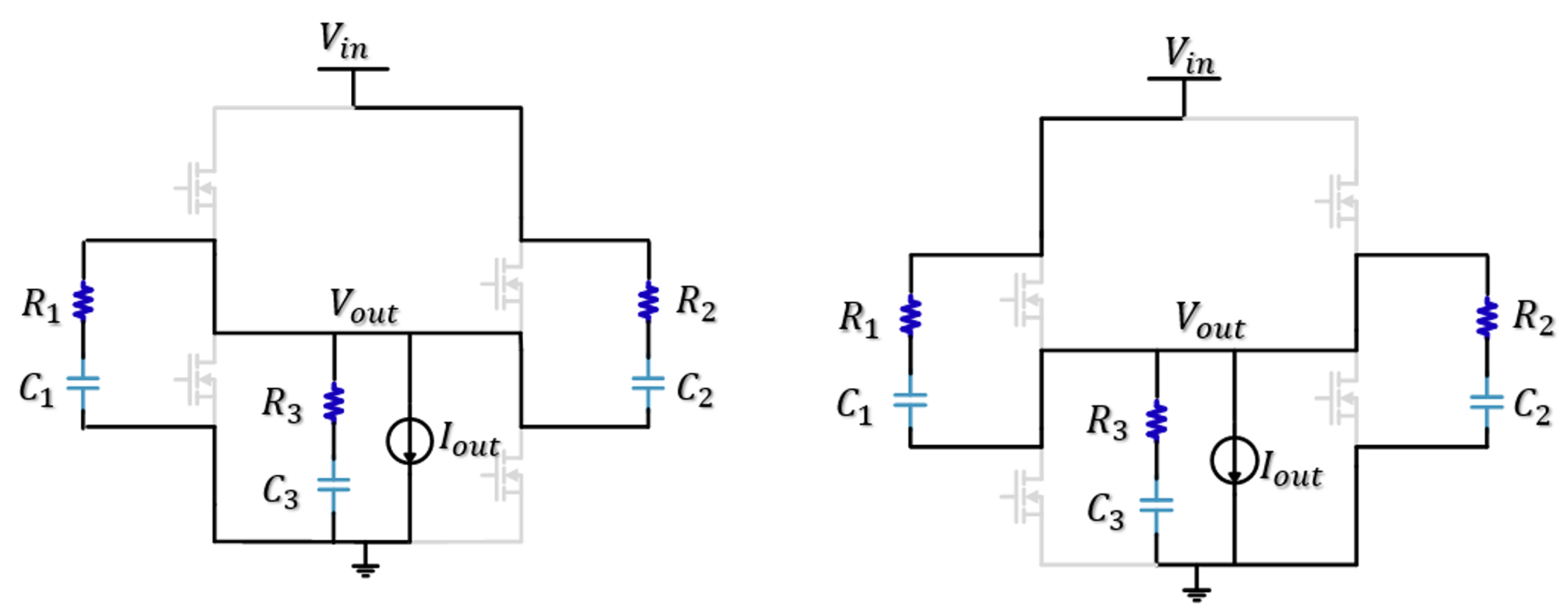
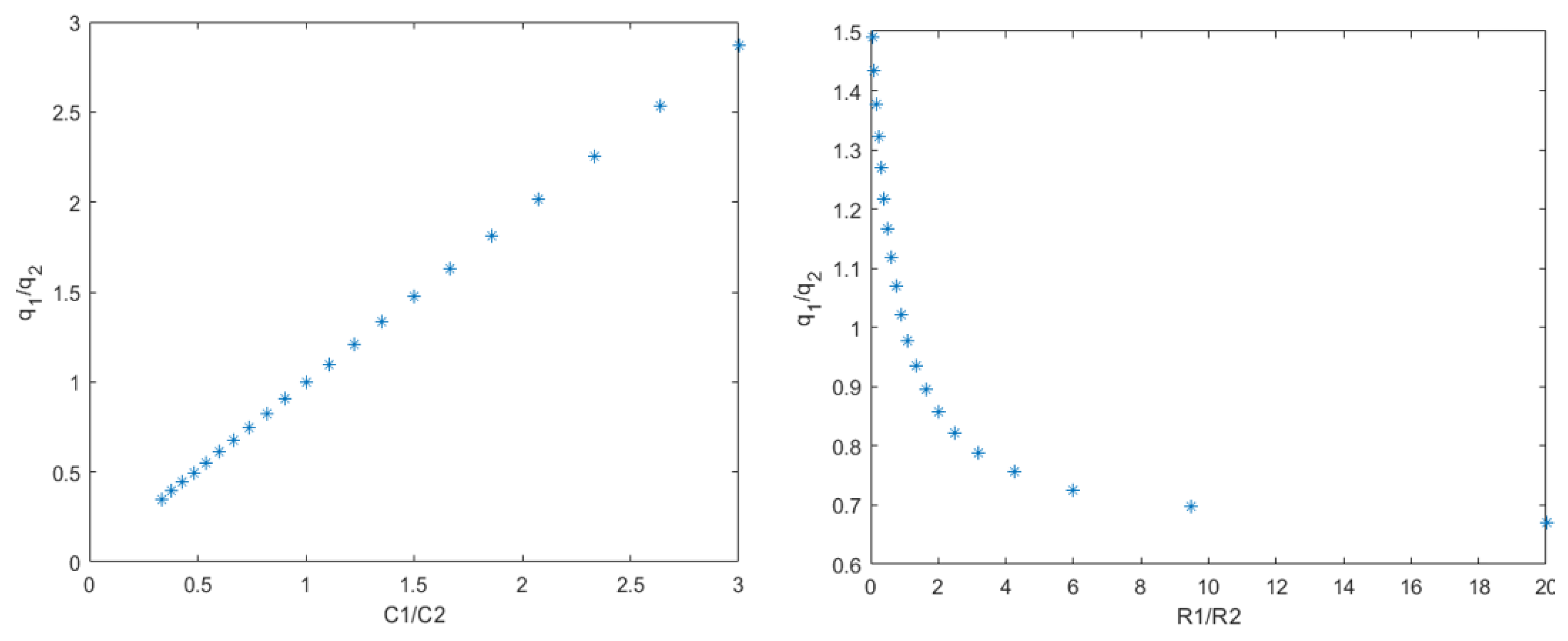
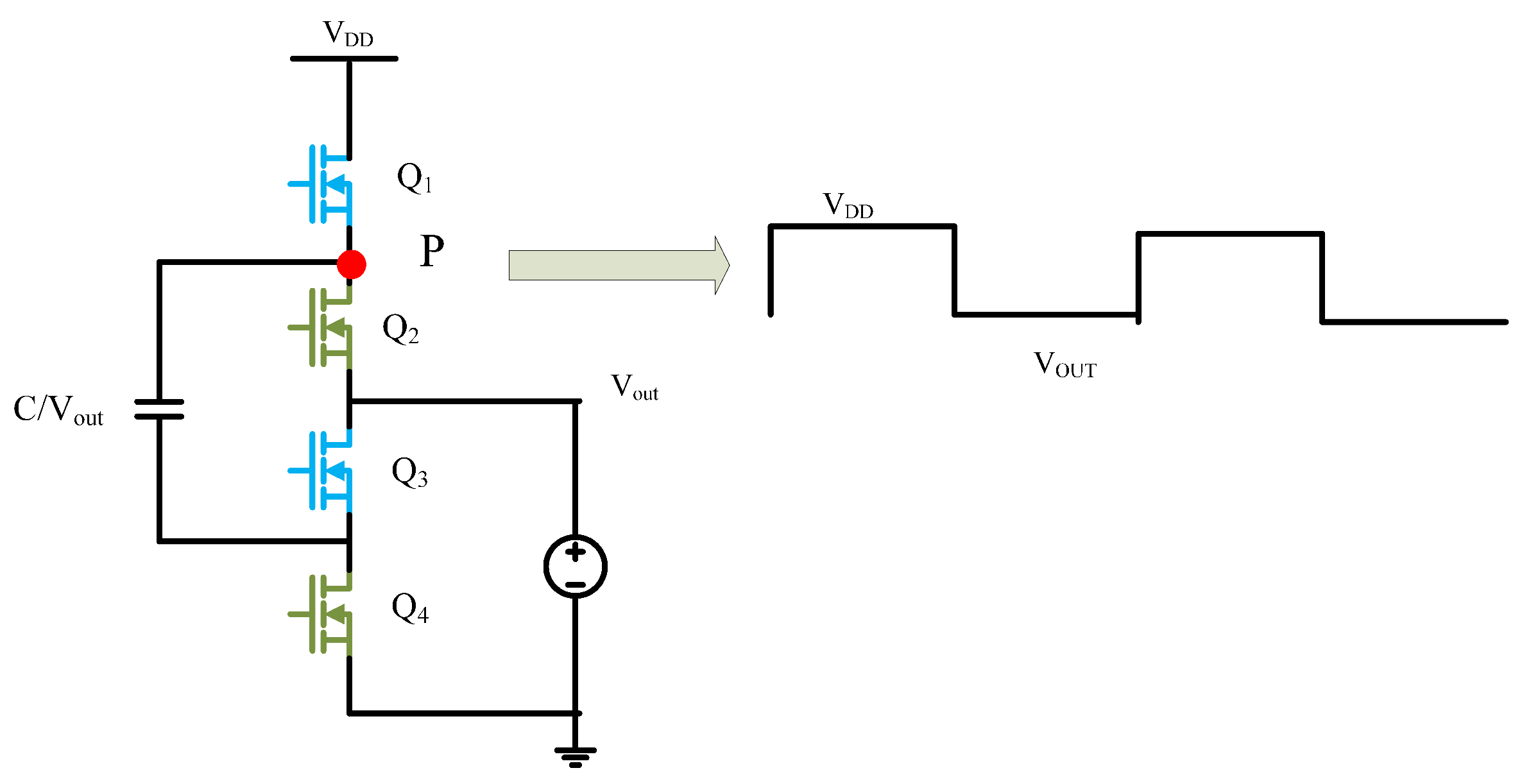
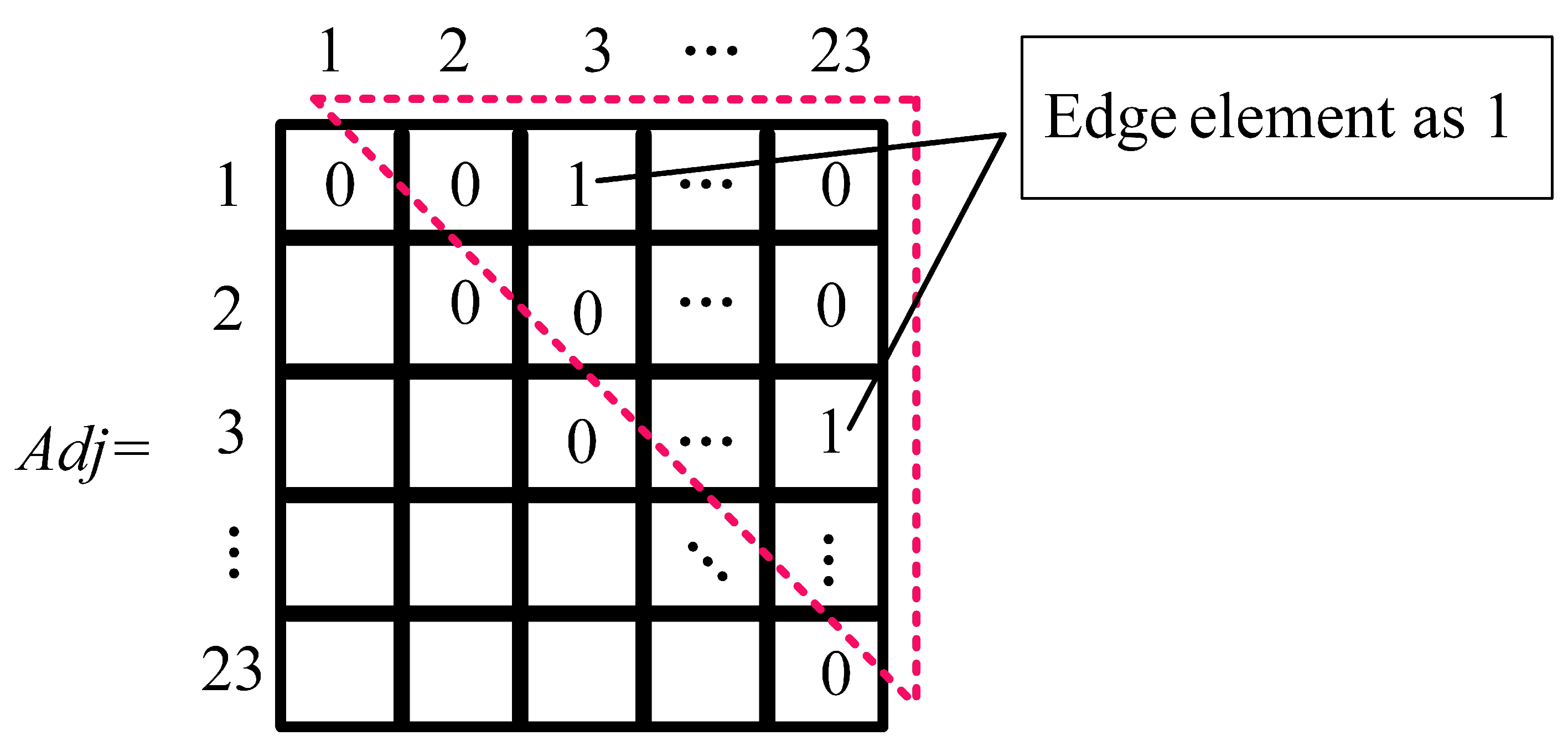


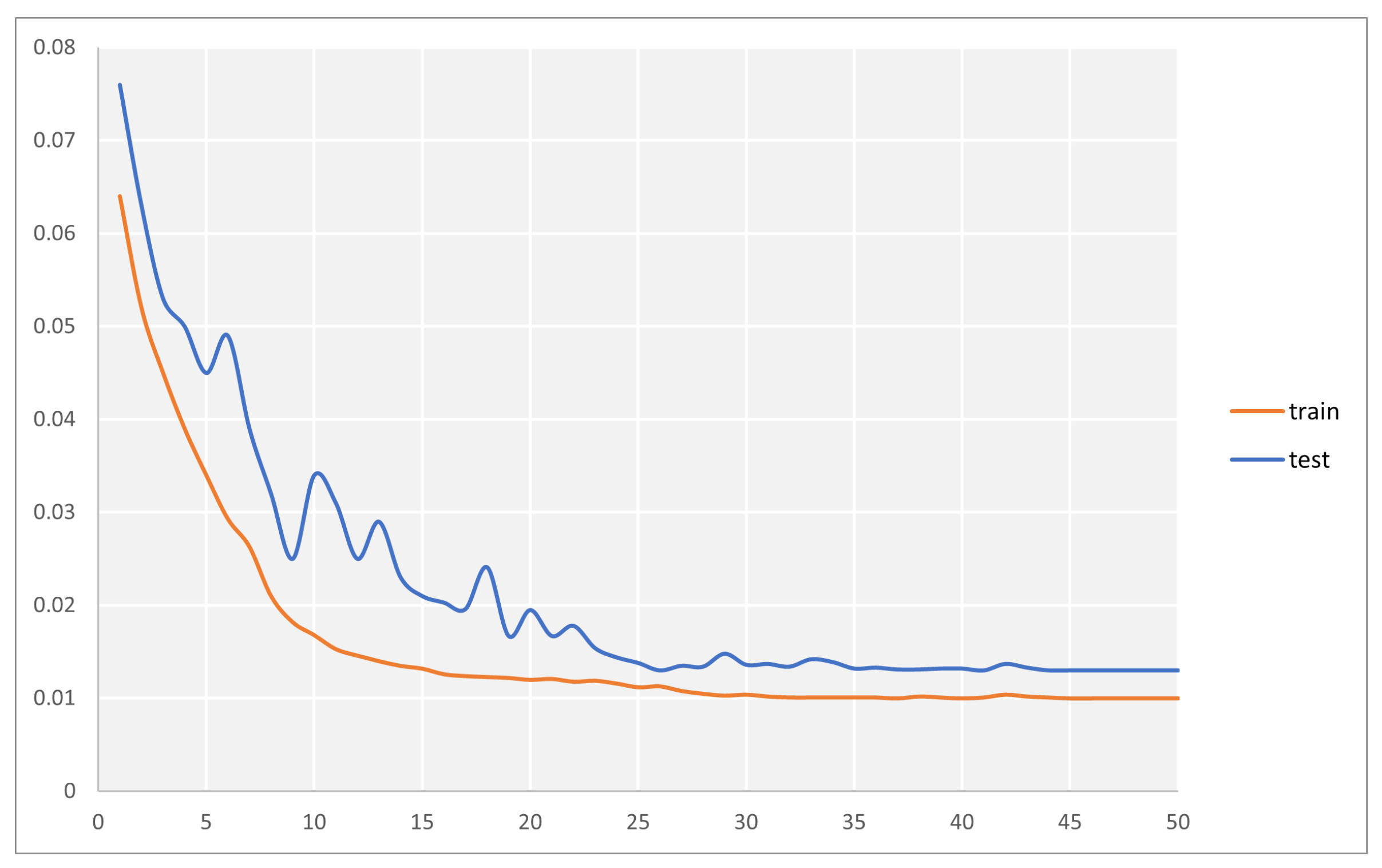

| Topology | Efficiency | Accuracy | |
|---|---|---|---|
| M.Navidi et al. [16] | Simple | High | Medium |
| H.Lin et al. [17] | Complicated | Low | High |
| M.Makowski et al. [18] | Medium | High | Low |
| This paper | Complicated | High | High |
| Parameter | Value |
|---|---|
| Input Voltage | 48 V |
| Output Voltage | 12 V |
| Switching frequency | 1 MHz |
| Rated output power | 120 W |
| ESR of capacitor | 2 mΩ |
| Layer | CNN Model Parameter |
|---|---|
| Input layer | 25 neurons |
| Conventional layer | Eight 3 × 3 conv2d padding = 1 |
| Fully connected layer 1 | 128 neurons |
| Dropout layer | 0.5 |
| Fully connected layer 2 | Eight neurons |
| Dropout layer | 0.5 |
| Fully connected layer 3 | One neuron |
| Layer | ANN Model Parameter |
|---|---|
| Input layer | 25 neurons |
| Fully connected layer 1 | 128 neurons (ReLU) |
| Dropout layer | 0.5 |
| Fully connected layer 2 | Eight neurons (ReLU) |
| Dropout layer | 0.5 |
| Fully connected layer 3 | One neurons (Sigmoid) |
| MSE | MAPE | Calculation Time (s) | |
|---|---|---|---|
| CNN | 0.0072 | 0.013 | 403 |
| ANN | 0.0168 | 0.032 | 139 |
| Linear Regression | 0.0323 | 0.070 | 72 |
Publisher’s Note: MDPI stays neutral with regard to jurisdictional claims in published maps and institutional affiliations. |
© 2022 by the authors. Licensee MDPI, Basel, Switzerland. This article is an open access article distributed under the terms and conditions of the Creative Commons Attribution (CC BY) license (https://creativecommons.org/licenses/by/4.0/).
Share and Cite
Huo, W.; Zhu, J.; Zhou, J.; Dan, Y.; Dai, P.; Lin, L. Fast Performance Evaluation for Switched-Capacitor Converter Based on Convolutional Neural Networks. Appl. Sci. 2022, 12, 7833. https://doi.org/10.3390/app12157833
Huo W, Zhu J, Zhou J, Dan Y, Dai P, Lin L. Fast Performance Evaluation for Switched-Capacitor Converter Based on Convolutional Neural Networks. Applied Sciences. 2022; 12(15):7833. https://doi.org/10.3390/app12157833
Chicago/Turabian StyleHuo, Weiyue, Jihong Zhu, Jing Zhou, Yangqing Dan, Pan Dai, and Ling Lin. 2022. "Fast Performance Evaluation for Switched-Capacitor Converter Based on Convolutional Neural Networks" Applied Sciences 12, no. 15: 7833. https://doi.org/10.3390/app12157833
APA StyleHuo, W., Zhu, J., Zhou, J., Dan, Y., Dai, P., & Lin, L. (2022). Fast Performance Evaluation for Switched-Capacitor Converter Based on Convolutional Neural Networks. Applied Sciences, 12(15), 7833. https://doi.org/10.3390/app12157833







